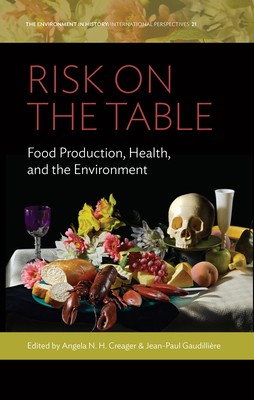
- We will send in 10–14 business days.
- Publisher: Berghahn Books
- ISBN-10: 1789209447
- ISBN-13: 9781789209440
- Format: 15.2 x 22.9 x 2.1 cm, hardcover
- Language: English
- SAVE -10% with code: EXTRA
Risk on the Table (e-book) (used book) | bookbook.eu
Reviews
Description
Over the last century, the industrialization of agriculture and processing technologies have made food abundant and relatively inexpensive for much of the world's population. Simultaneously, pesticides, nitrates, and other technological innovations intended to improve the food supply's productivity and safety have generated new, often poorly understood risks for consumers and the environment. From the proliferation of synthetic additives to the threat posed by antibiotic-resistant bacteria, the chapters in Risk on the Table zero in on key historical cases in North America and Europe that illuminate the history of food safety, highlighting the powerful tensions that exists among scientific understandings of risk, policymakers' decisions, and cultural notions of "pure" food.
EXTRA 10 % discount with code: EXTRA
The promotion ends in 16d.12:54:35
The discount code is valid when purchasing from 10 €. Discounts do not stack.
- Publisher: Berghahn Books
- ISBN-10: 1789209447
- ISBN-13: 9781789209440
- Format: 15.2 x 22.9 x 2.1 cm, hardcover
- Language: English English
Over the last century, the industrialization of agriculture and processing technologies have made food abundant and relatively inexpensive for much of the world's population. Simultaneously, pesticides, nitrates, and other technological innovations intended to improve the food supply's productivity and safety have generated new, often poorly understood risks for consumers and the environment. From the proliferation of synthetic additives to the threat posed by antibiotic-resistant bacteria, the chapters in Risk on the Table zero in on key historical cases in North America and Europe that illuminate the history of food safety, highlighting the powerful tensions that exists among scientific understandings of risk, policymakers' decisions, and cultural notions of "pure" food.


Reviews